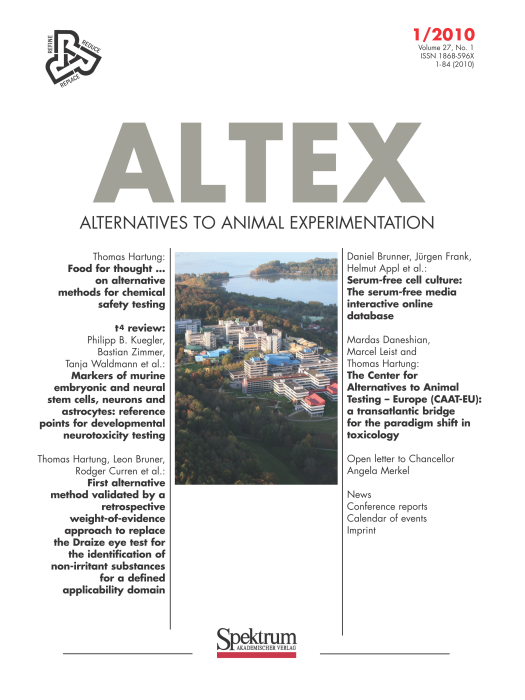Markers of murine embryonic and neural stem cells, neurons and astrocytes: Reference points for developmental neurotoxicity testing
Main Article Content
Abstract
Developmental neurotoxicity (DNT) is a serious concern for environmental chemicals, as well as for food and drug constituents. Animal-based DNT models have relatively low sensitivity, and they are burdened by high work-load, cost and animal ethics. Murine embryonic stem cells (mESC) recapitulate several critical processes involved in the development of the nervous system if they are induced to differentiate into neural cells. They therefore represent an alternative toxicological model to predict human hazard. In this review, we discuss how mESC can be used for DNT assays. We have compiled a list of mRNA markers that define undifferentiated mESC (n = 42), neural stem cells (n = 73), astrocytes (n = 25) and the pattern of different neuronal and non-neuronal cell types generated (n = 57). We propose that transcriptional profiling can be used as a sensitive endpoint in toxicity assays to distinguish neural differentiation states during normal and disturbed development. Importantly, we believe that it can be scaled up to relatively high throughput whilst still providing rich information on disturbances affecting small cell subpopulations. Moreover, this approach can provide insight into underlying mechanisms and pathways of toxicity. We broadly discuss the methodological basis of marker lists and DNT assay design. The discussion is put in the context of a new generation of alternative assays (embryonic stem cell based DNT testing = ESDNT V2.0), that may later include human induced pluripotent stem cells, and that are not designed for 1:1 replacement of animal experiments, but are rather intended to improve human risk assessment by using independent scientific principles.
Article Details
Articles are distributed under the terms of the Creative Commons Attribution 4.0 International license (http://creativecommons.org/licenses/by/4.0/), which permits unrestricted use, distribution and reproduction in any medium, provided the original work is appropriately cited (CC-BY). Copyright on any article in ALTEX is retained by the author(s).


